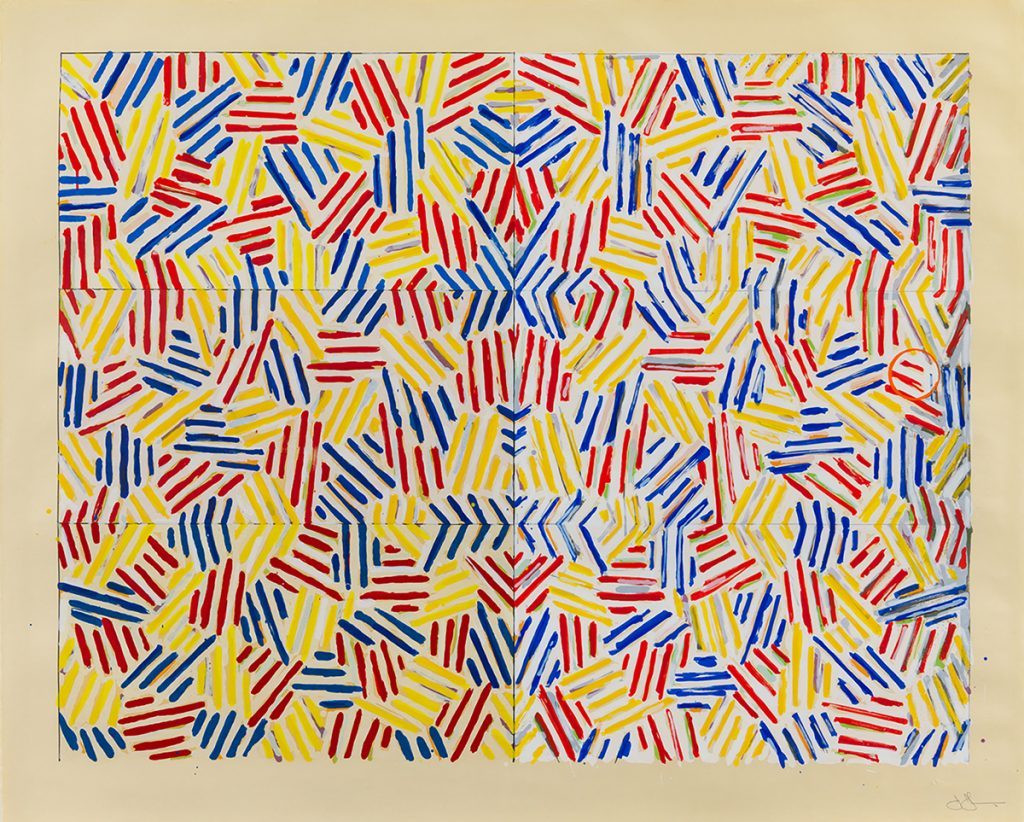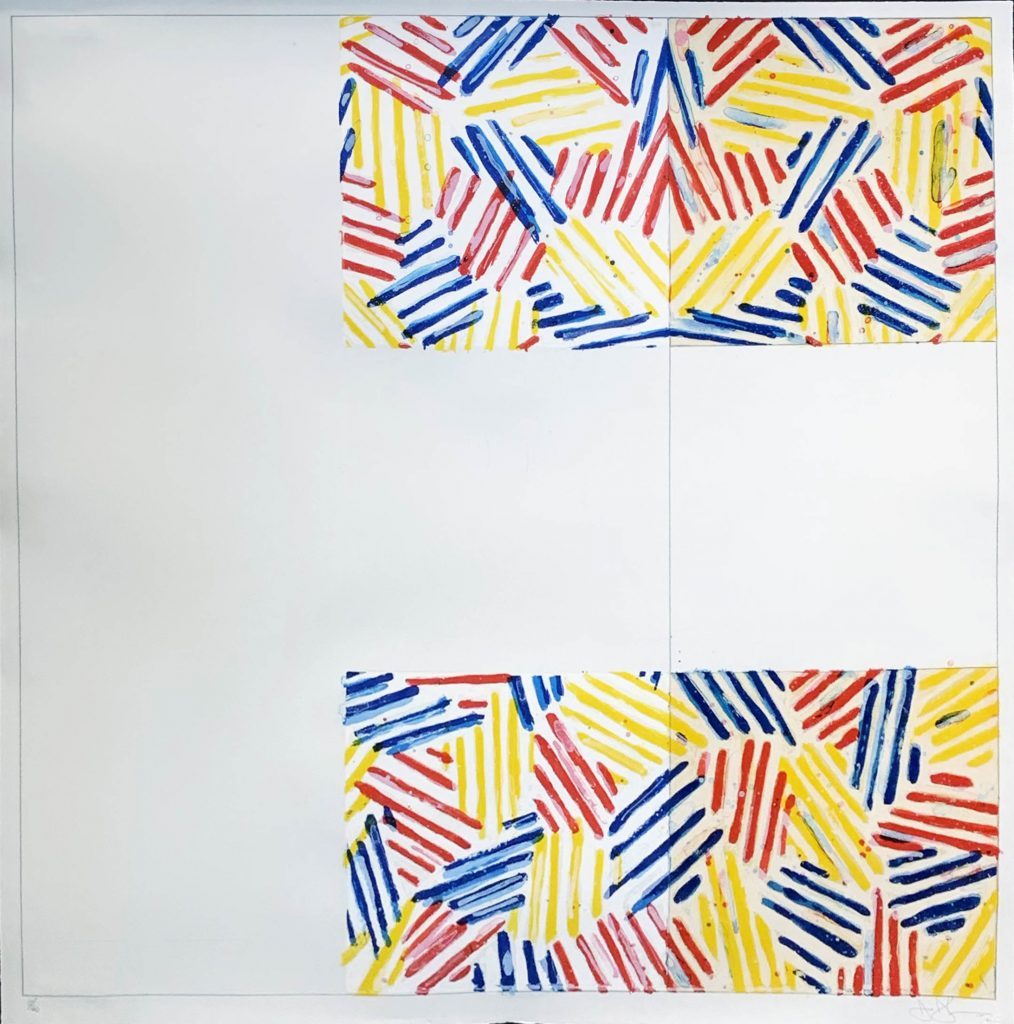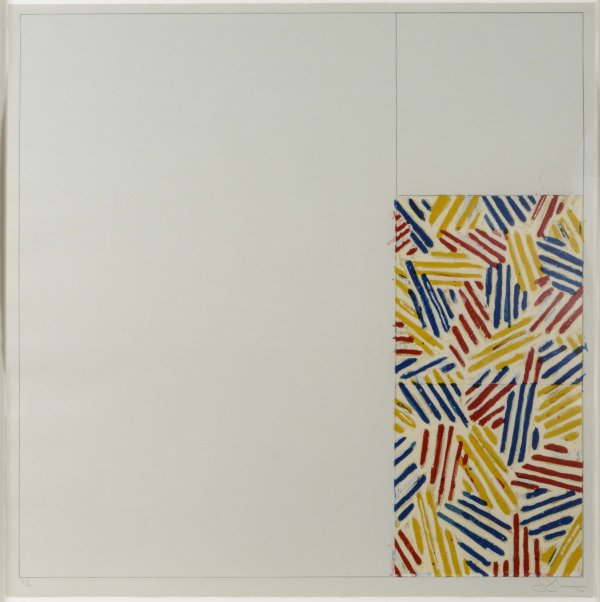Jasper Johns Crosshatched Prints
· blog
Jasper Johns Crosshatched prints are iconic. The works of iconic 20th century artist Jasper Johns had a ripple effect on just about every artistic movement from the 1950s right up the present time. Johns himself was particularly taken with previous modernist movements like Abstract Expressionism and Dadaism. He looked to celebrate the unique material qualities of the mediums he worked with, making his pieces very distinctive to the viewer. Additionally, Johns was fascinated by how cultural context affects the way art is interpreted.
By taking a common, every day object and representing it in realm of fine art, Johns systematically broke down the boundaries that had traditionally separated fine art and everyday life. In effect, he laid the foundations for the Pop art movement’s concern with commodity culture using his playfully subversive take on common objects you’d see every day. Johns’ preoccupation with perception and semiotics also set the stage for both the Postmodern movement and the Conceptual art movement of the decades that followed. Johns particularly adopted the evocative Abstract Expressionist brushstroke in his pieces, and his work contained symbols that enhanced the multiplicity of meanings and interpretations found within. Like Marcel Duchamp, his revered mentor, Johns artistically set up a dialogue in each of his works that needed to reach a resolution within the mind of the person viewing it.
Using a range of found objects, shreds of newspaper and even old coffee cans, Johns constantly sought to erase the division between mass culture and fine art. This moved modern art away from abstraction and more towards the landscape of consumerism that enveloped mid-20th century America.

Crosshatching work
One particular way of working that typified Jasper Johns prints in the late 1970s and ’80s was his crosshatching work. Here he would use collaged newspaper scraps to create a thick, almost paste-like surface as his medium. In his piece The Dutch Wives, Johns took advantage of the photographic possibilities of working this way, and prepared collages of newsprint strips that were then made into photo screens. The newsprint acts at the framework of the piece, with several layers of grey ink paper strips thick with wax laid over the top. Just like in his paintings, the newspaper strips stick out both within the panels and at the edges, with the text serving to confuse and challenge the viewer.

Whilst it’s difficult to work out the meaning behind Jasper Johns crosshatched prints, sometimes clues can be found in the titles. One example of this is in his 1982 work Usuyuki. In Japanese, the word “usuyuki” refers thin or light snow. Johns was captivated by this word and related it in his mind to the fleeting beauty of the world. In his Usuyuki prints, Johns provides a strong feeling of sentimentality through his spacing between his crosshatch marks and delicate use of colour. Indeed, Jasper Johns crosshatched prints have remained popular to this day.

Johns experimented with different forms of crosshatching throughout his career, repeating forms and motifs across a range of media right up until the end of the 1980s. Printmaking provided a way for Johns to explore his compositional ideas, and influenced his painting just as much as his paintings affected his prints. For Jasper Johns crosshatched prints especially, crosshatching is perfect for evoking depth, shade, mirroring and patterns, and the technique makes his pieces instantly recognisable.
Jasper Johns Art
View Jasper Johns prints available from leading galleries.
